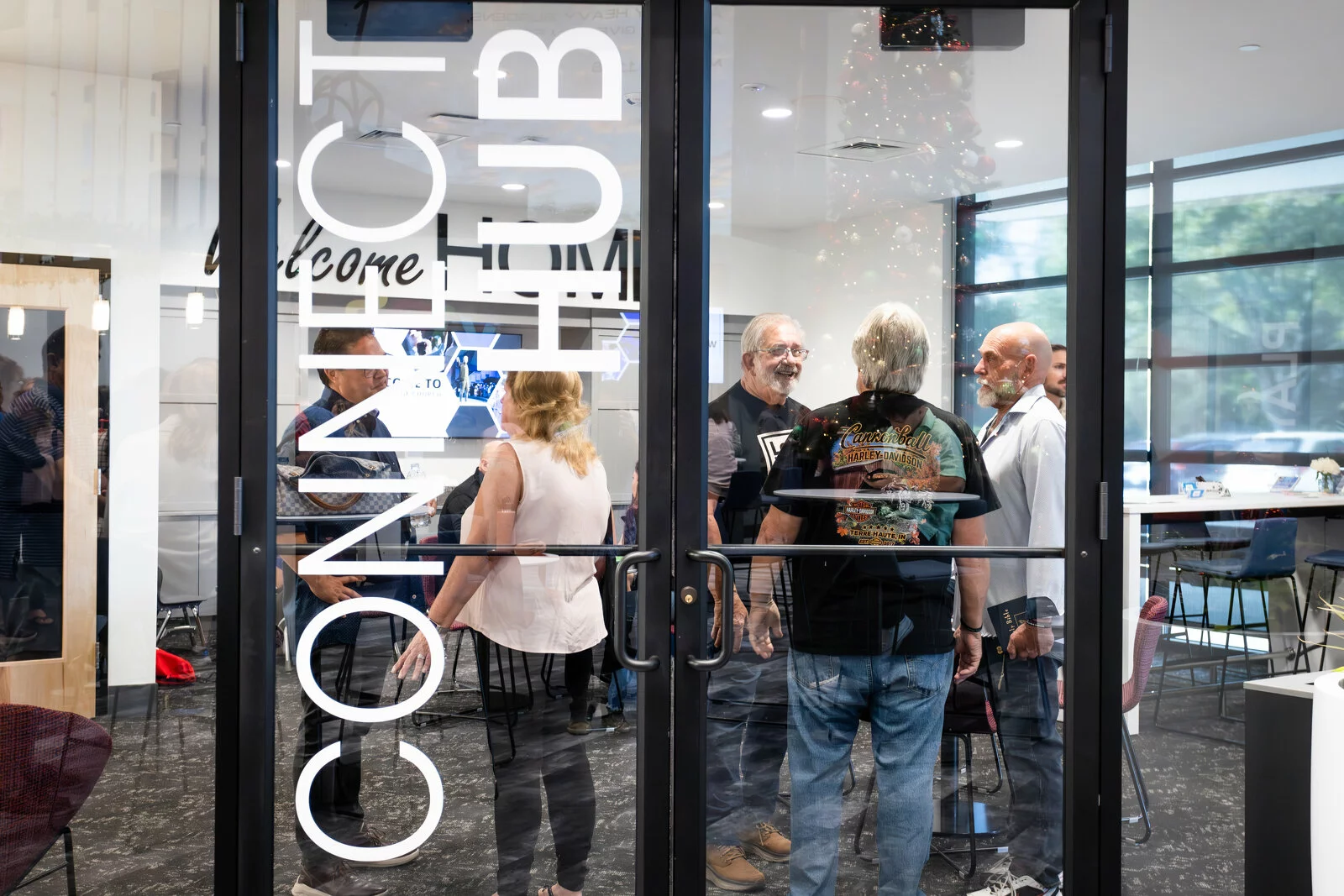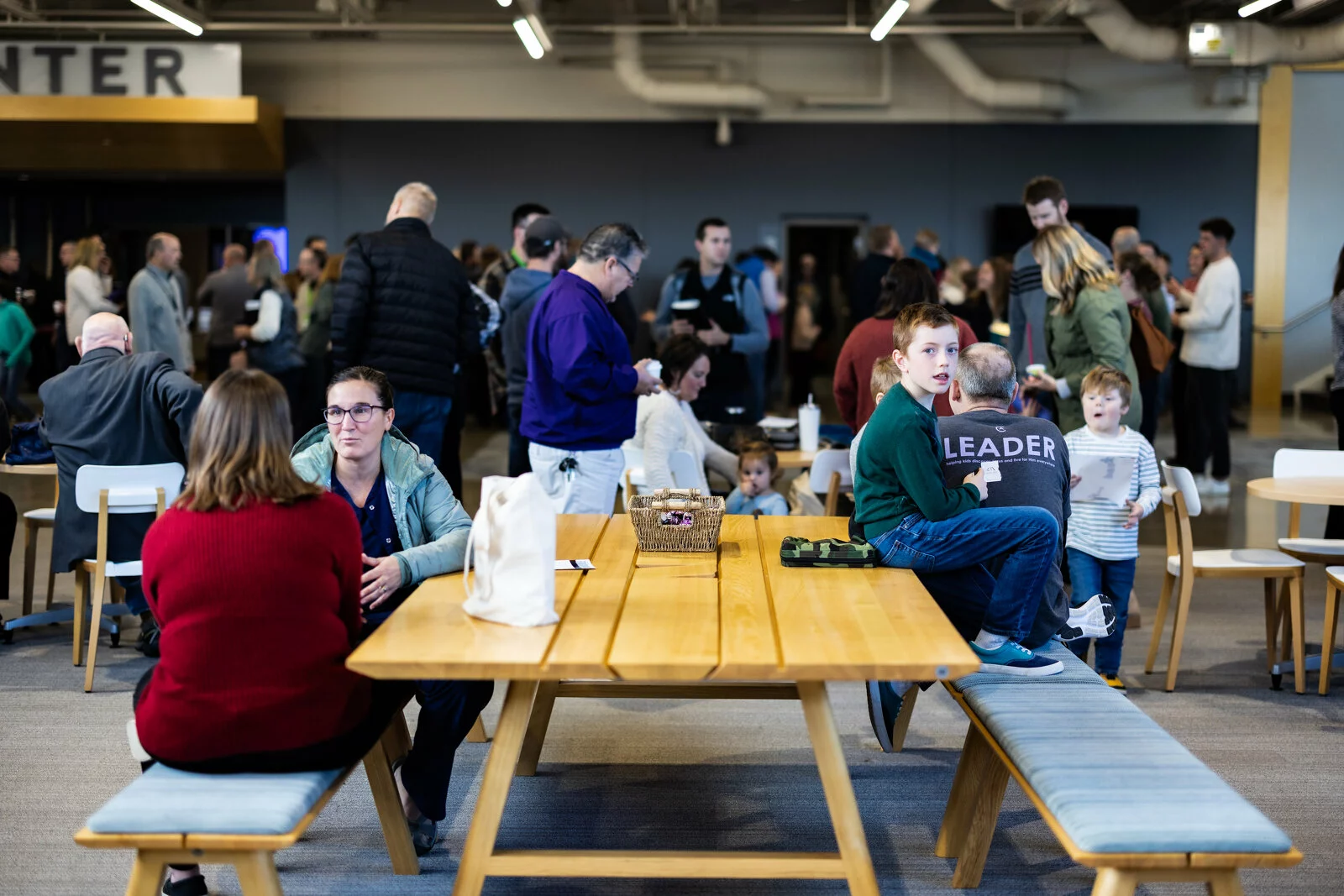As ministers, congregants, elders, and deacons, we often disregard the tangible aspects that design has to offer as it pertains to our church’s spiritual health. This belief becomes a distant measure because the practicalities of preaching, teaching, and worship lead the charge in making disciples. Let it be known that these practicalities are more than needed, they are foundational, but what we are posing is that there is more to the story. At Aspen Group, our client testimonials, research with Barna Group, and expertise in ministry focused design have all concluded that designing with emotional wellbeing in mind truly matters to your church’s spiritual health.
To further identify what it means to design with emotional wellbeing in our purview, this article will outline the importance of spaces that provide comfort and connection, how the natural world brings respite, and what this means for the future of the Church. Crafting spaces that build faith are at the center of Aspen Group’s mission and it cannot be attainable unless the emotional wellbeing of our congregants is taken care of.
Designing Safe Spaces
Over the last few years in our partnership with Barna Group, the research conducted has yielded impactful statistics that have helped shape our design narrative. For instance, one of the surveys showed that most U.S Christians are more likely to have life-related conversations in the comfort of someone’s home rather than a church, in a coffee shop, or in nature. Instead of asking, why aren’t people talking about life topics, such as anxiety, depression, and mental health in the church?! We asked a different question. How can we be a tool to help people talk about these concepts in a church? Aspen has reflected on this question by formulating design concepts that help bring aspects of the home into the church so these conversations can happen in the confines of our spiritual homes too. When our churches serve as a safe space, our congregations will feel at ease talking about matters that are significant to their life.
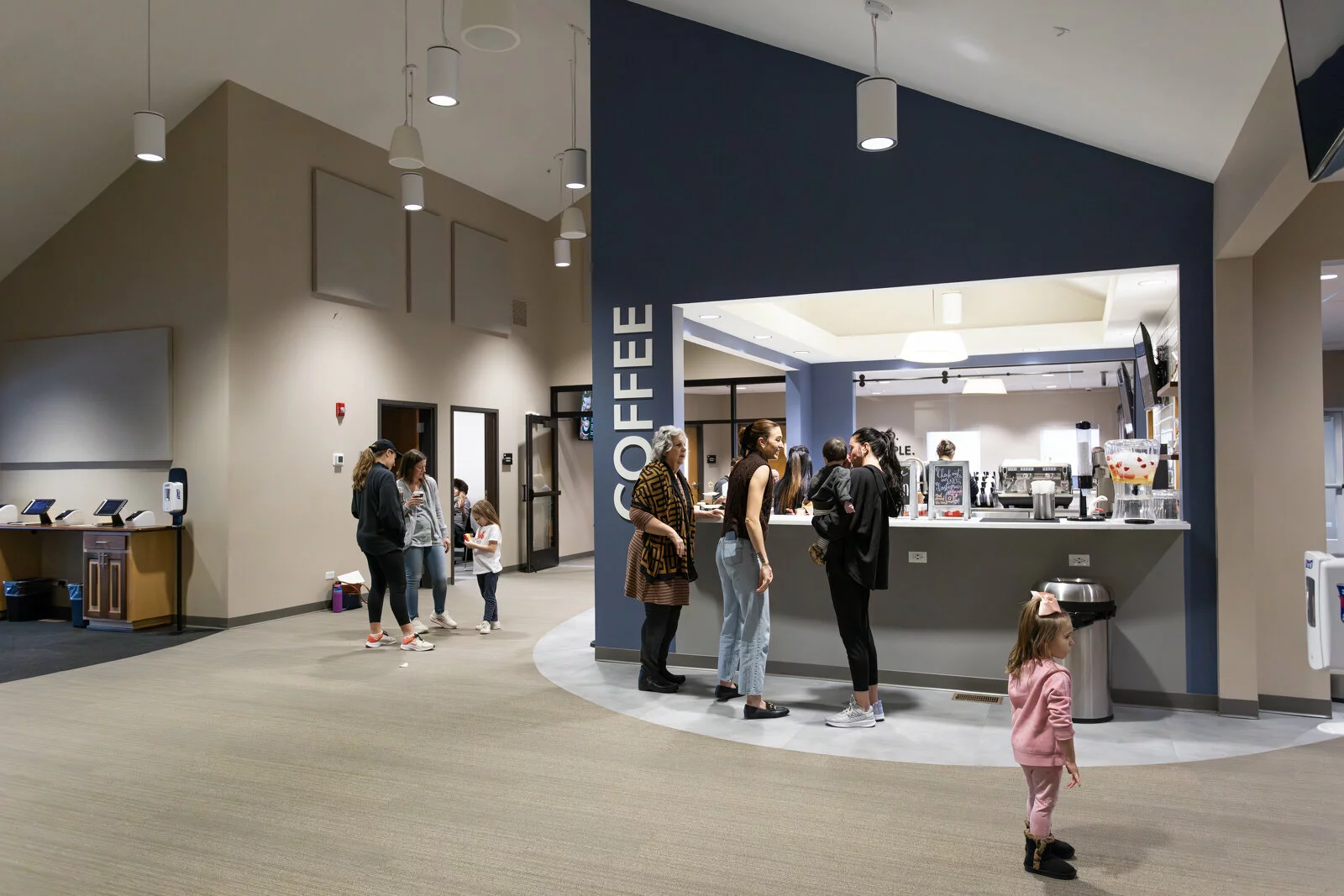
Biophilic Design and Its Importance
An often-overlooked concept in church design is the importance of natural elements in our spaces. Biophilic design allows us to connect with nature through different spaces and places within a building. Often, we do this by creating courtyards for respite, using large windows to increase the amount of natural lighting in a specific space, and giving access to greenery through exit and entryways specifically positioned to take you outside into nature’s beauty. The American Institute of Architects notes that enhancing access to nature, both indoors and outdoors, promotes emotional and social wellbeing.
A few years ago, Chapelpointe in Hudsonville, Michigan came to us needing a partner to help them build a space that would craft a space that was not only larger, but also allowed their congregants to connect with nature. Our design team helped us make design shifts from merely solving a square footage problem to capturing a culture of seeing and taking in the created world around us—an important part of rest, reflection, and time with God. This biophilic centered design helped us showcase the importance of designing for wellbeing in the church with nature as a prominent feature!
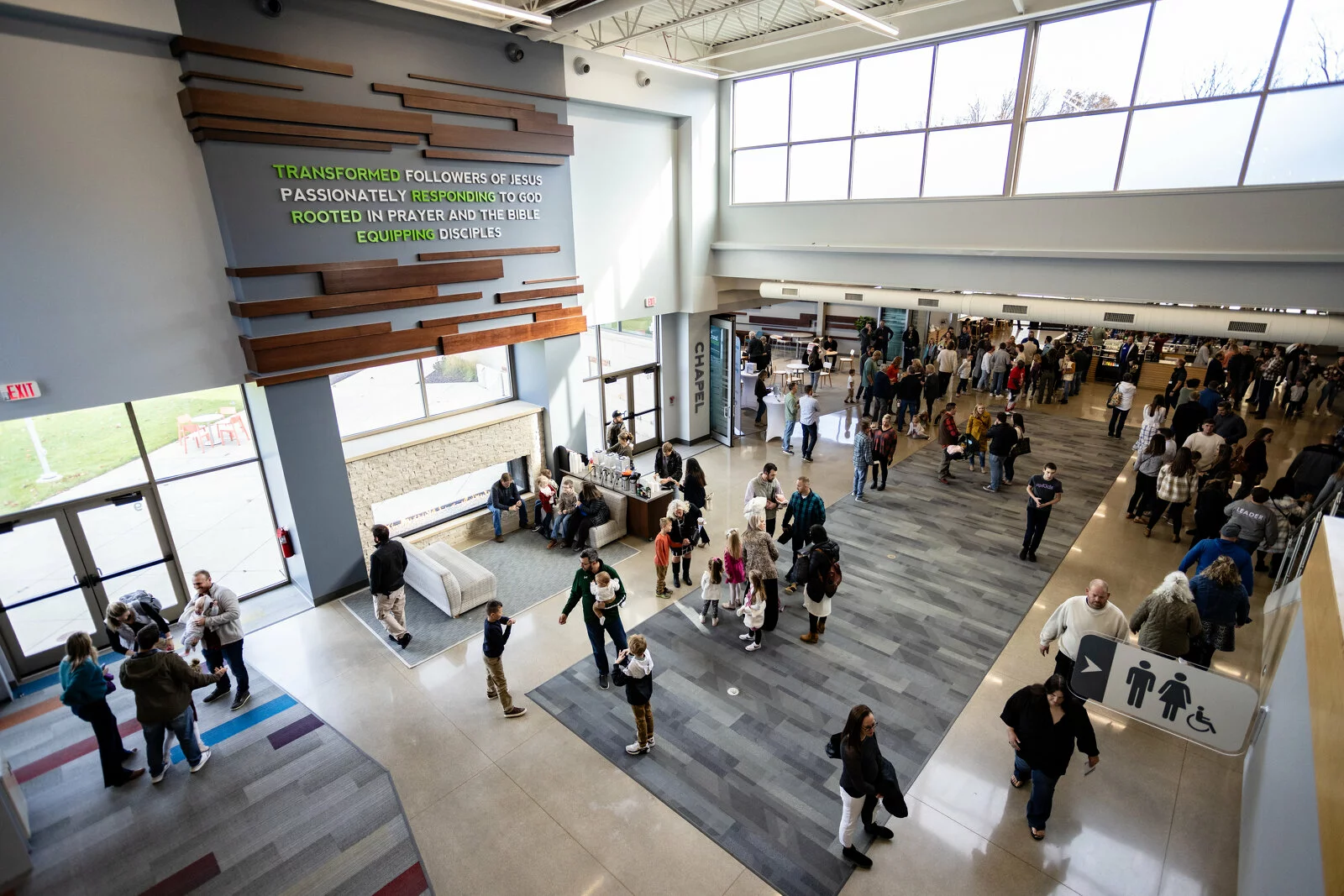
Designing for Connection
Both our research with Barna and the AIA have concluded that designing for the purpose of community help combat the epidemic of loneliness that is happening in our country. In our research with Barna, younger generations are seeking places where they can partake in a community of people who love and accept them. (link to buy MSFC). What better place than a church to invite people in to build a safe community that people will trust? To do so, design concepts must be centered around connection and community by providing a third space where people can convene. Not only does this combat the notion of loneliness, but also gives people the opportunity to live in a community that God has designed us for. If our churches are meant to promote our emotional wellbeing, then designing for connection will do just that. These designs will help promote the interpersonal connection that our congregations need for discipleship, fellowship, and community.
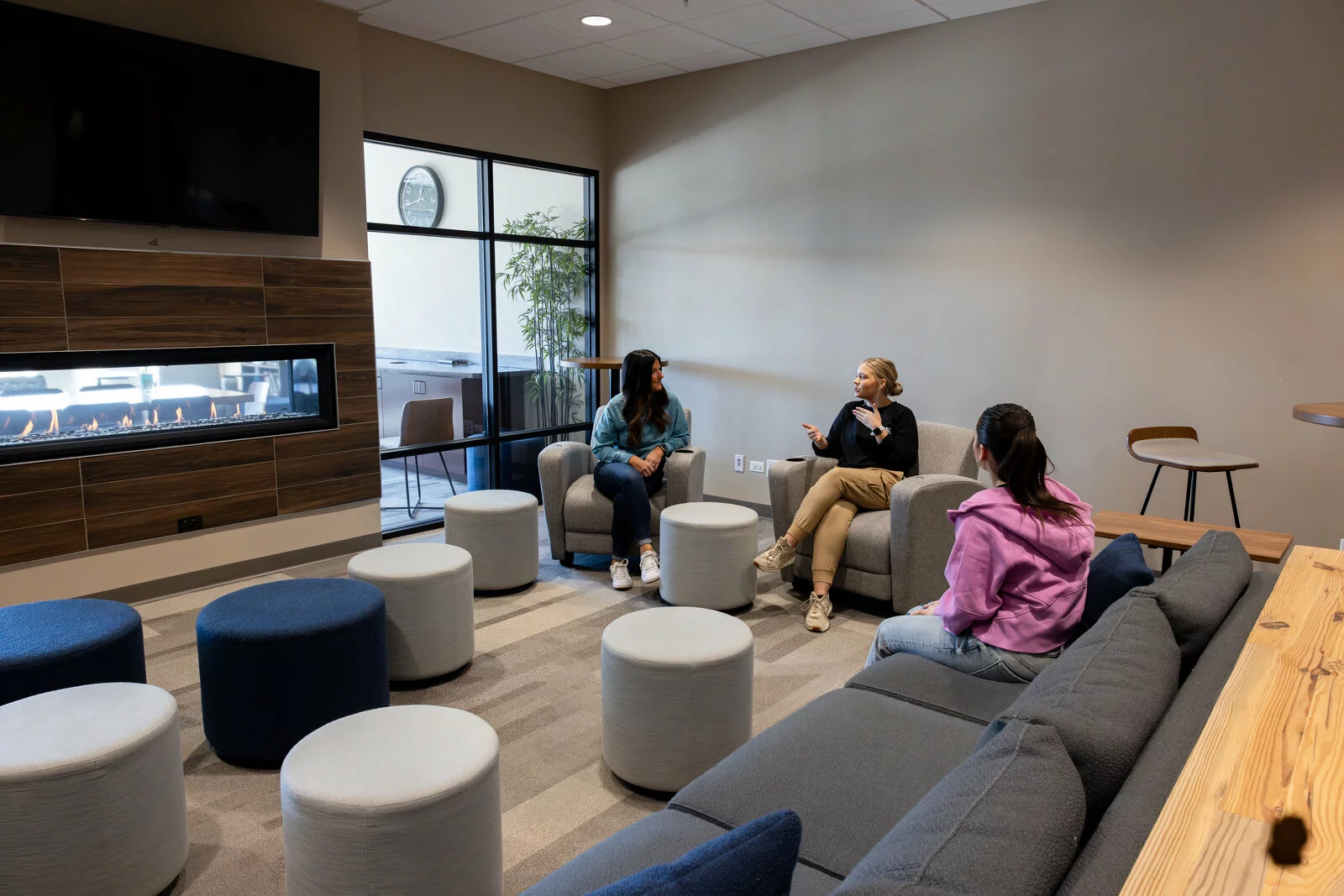
Crafting Spaces for a Better Future:
If we dedicate ourselves to crafting spaces for a better future, then that means we need to design with the emotional wellbeing of our church congregations in mind. We tend to think that design can be put on the backburner because Sunday tends to be about what happens on the platform on a Sunday morning. Where we are and what we see form every aspect of our experiences and our emotions… everywhere we go but especially in a church. To reflect on our relationship with God in nature, in a safe space, or even in community provides us with the respite and connection necessary to grow into mature believers. If people are constantly feeling unease, a lack of emotional security, or lonely, then how can expect them to experience the fullness of life that Christ has to offer. Design can be a pivotal tool in your arsenal, and Aspen group wants to aid you in this process!
